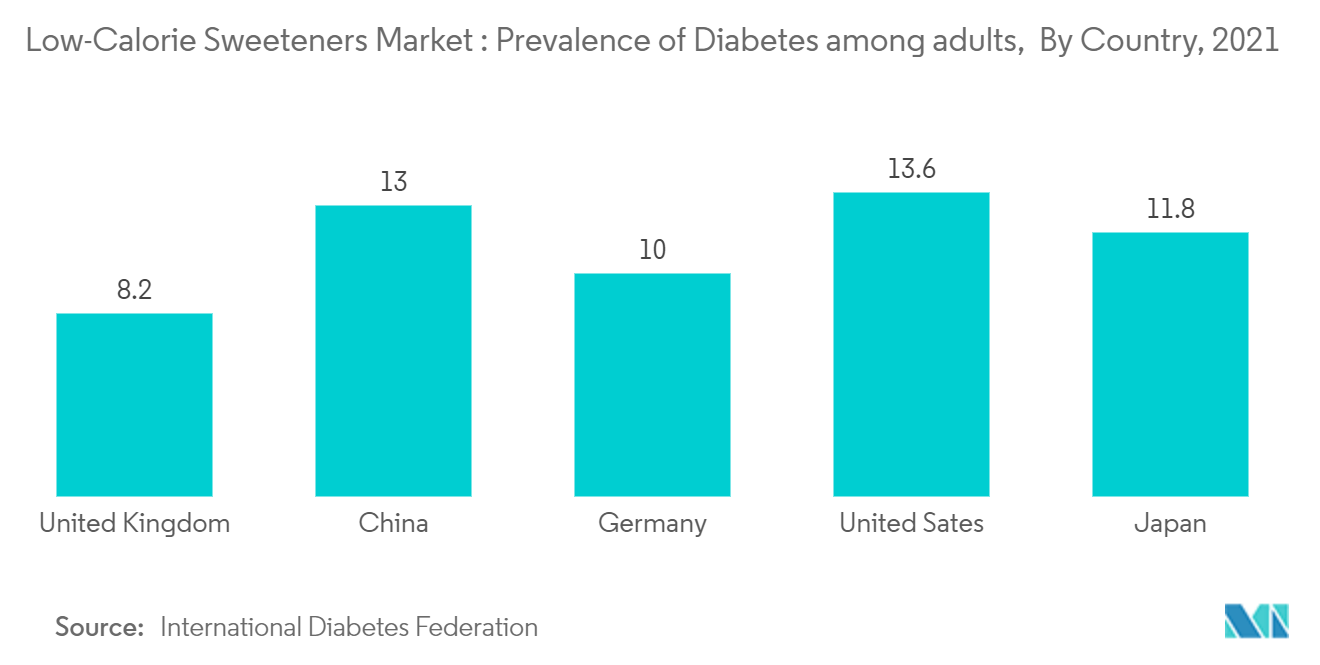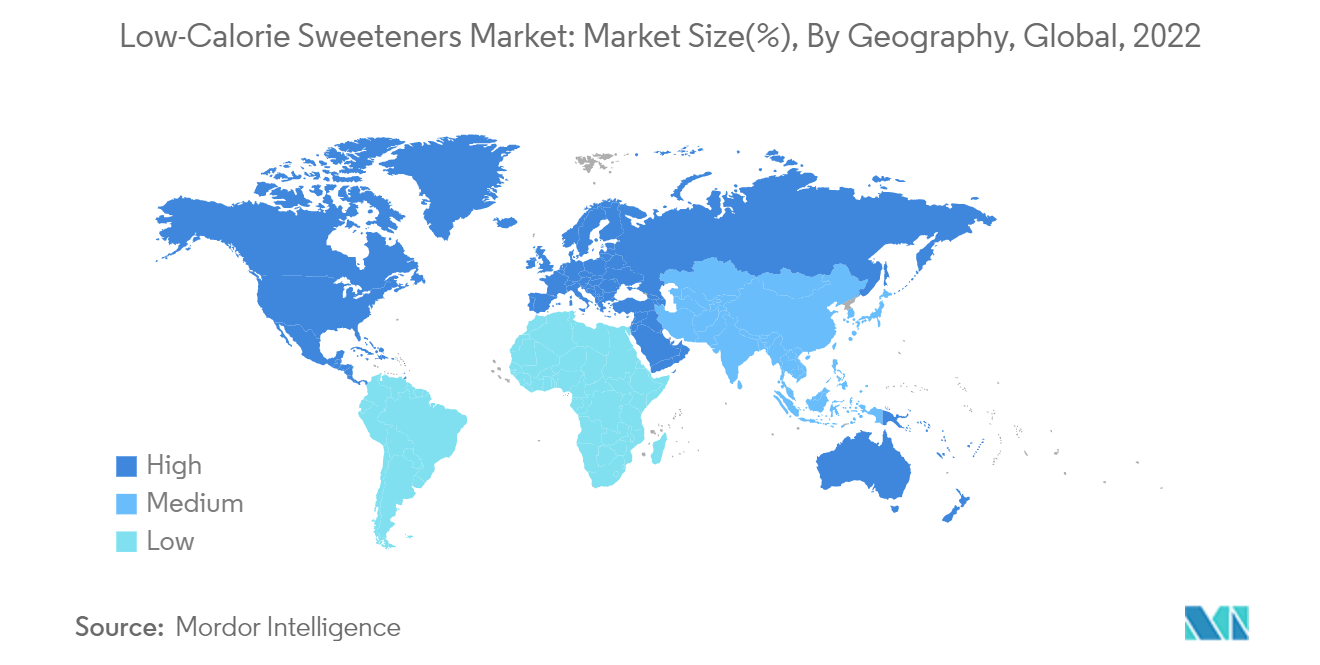Market Trends of Low-Calorie Sweeteners Industry
This section covers the major market trends shaping the Low-Calorie Sweeteners Market according to our research experts:
Health-conscious Consumers Reducing Sugar Content in their Food
Consumers have a growing health consciousness due to increasing awareness of immune and rising health problems. The rate of obesity has grown drastically among adults along with young children in most developed countries. Obesity is associated with adverse health conditions, including diabetes and cardiovascular diseases. The high-calorie consumption consciousness among American consumers is driving the demand for low-calorie foods and beverages across the country. In addition, according to the 2nd Annual Advancing Sugar Reduction Technologies Summit in 2021, around 84% of consumers were reducing sugar consumption, and over 56% of consumers are focusing on consuming less sugar. This is increasing the market flow of low-calorie food and beverage products from manufacturers to meet the growing consumer demands.
Moreover, authorities like the WHO are also contributing to the growth of low-calorie sweeteners; for instance, new WHO guidelines recommend consumers reduce their daily intake of sugar to less than 10% of their total energy intake. Thus, the growing health consciousness among consumers is expected to benefit the global low-calorie sweeteners market. Furthermore, major players in the low-calorie sweeteners market are investing extensively in R&D and new product developments to produce different variants of low-calorie sweeteners with superior quality to meet consumer needs. Continued innovations and the adoption of advanced technologies will help them to improve their overall efficiency. Changing consumer dynamics and increasing demand for low-calorie and sugar-free products will provide lucrative opportunities to low-calorie sweeteners manufacturers and distributors in the upcoming years.

Europe is the Largest Consuming Region
The European low-calorie sweeteners market accounts for a significant share across the world, owing to rising consumer awareness about natural sweeteners. Consumers in Europe are looking for healthier food and beverage options, making manufacturers focus on adopting natural and nutritious ingredients. Consumption of stevia is rising in Europe, with countries like France, Germany, and Italy importing large amounts of stevia from developing nations. Presently, there are 11 low-calorie sweeteners approved for use in soft drinks in Europe, including Acesulfame K, Aspartame, Stevia, and Sucralose. Post government authorization, these low-calorie sweeteners are widely used in the production of soft drinks. The European soft drink industry has long been involved in a continuous process of removing added sugar from its products and introducing low or zero calories varieties on the market, thus driving the application in the beverage sector.
The European Regulatory Authority is playing a crucial role in boosting the demand for low-calorie sweeteners with stevia approved by the European Union for the use and sale of steviol glycosides extracted from the leaves of the stevia plant as a sweetener. In Europe, the regulatory bodies provide provisions for the growth of the market, thus aiding the local players to enter the market. However, the stringent and changing regulations in Europe may also hamper the market growth in the forecast period.

